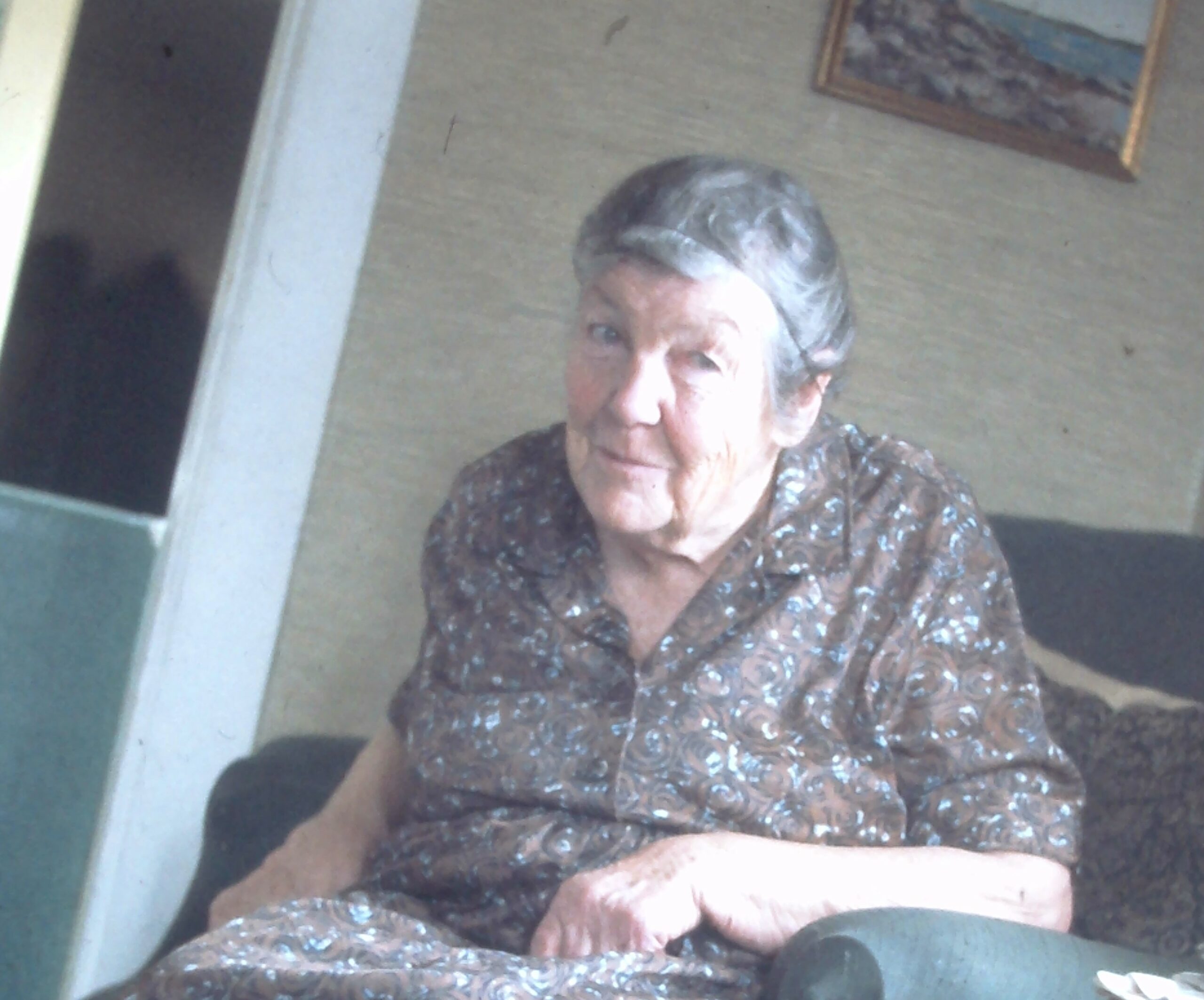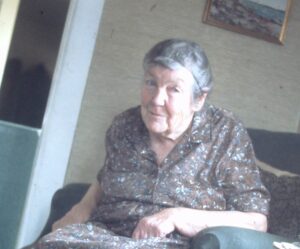Katharine Stanley Hall
Posted on January 20, 2025 by Jenny ONeill

WOMEN OF WESTPORT POINT
Katharine Stanley Hall (1886 – 1970)
Community caretaker, librarian
1871 Main Road, Westport Point

Katharine was born in Brooklyn Heights, New York in 1886, the eldest child of Rev. Charles Cuthbert Hall and Jeanie Stewart Boyd. She spent most of her youth in New York City where Dr. Hall was President of the Union Theological Seminary. In 1886 the Halls came first to Westport Point staying in the village (invited by Lucius and Harriet Sheldon). In 1888 they built Synton on Eldridge Heights overlooking the Westport River West Branch. Here with their four children they spent all their summers and other holidays. Katherine, her mother and younger brother, Theodore (who was disabled) remained in Westport Point the rest of their lives.
Katharine went to Miss Spence’s School in New York and graduated from Wellesley College. She traveled extensively with her family, twice around the world and many times to England and Scotland.
Katharine was an active and beloved figure in the town, running the small library, teaching Sunday School at the Point Methodist Church and working with children to whom she was a beloved extra aunt. (See article by Glenda Broadbent.) Besides The Village of Westport point which she wrote with Mary Hannah Sowle, she wrote one other book, Children at Play in Many Lands.
Katharine always appreciated the local people at the Point, including Ray Palmer and Glenda Broadbent, and others who worked for her family, provided accommodations and food for summer visitors, and gave her so much love and appreciation.
Katharine Stanley Hall
As remembered by her niece Katharine Hall Preston
Katharine Stanley Hall was a wonderful woman whom every person who knew her in Westport considers almost a saint. People adored her. She was extraordinarily kind. She never married.
After Rev. Charles Cuthbert Hall, her father, died, Katherine’s brother, Rev. Basil Hall, and her mentally challenged brother Theodore moved to Synton, and Katherine took care of both of them for years, uncomplainingly! She created the magical garden that used to be behind Synton, an absolutely gorgeous garden. She took care of her hens, her goats, the peacock, the horse, etc. She took us for drives in the horse-drawn carriage. She made those incredibly wonderful round rolls that we all adored; we used to “help” her make them. What a marvelous smell that was! She always was friendly and happy to all she met. At one point she had a stroke but survived.
Aunt K tended to be so kind that she would give away whatever she thought people would like or sold it. She sold the house (1871) with the library on it to Mr. Packard with everything in it. That created some consternation for the family because some articles in it were precious to other members of the family. People who worked for her were much appreciated. She sold or gave (not clear) land to Ray Palmer and Walter Broadbent who had done much work for her family through the years.
Aunt K, in her older years, drove a little car. You literally couldn’t see anything but a tiny head looking through the steering wheel. Her little house, mentioned above, became a nature center!! Not really, but she had cages in her living room in which she had injured birds, animals, etc. She had a magic way of making them all healthy. Her house was filled with plants; she had a magical “green thumb”.
The Westport Point Library and Our Miss Hall
By Glenda Broadbent
Those of us who grew up in Westport Point are the most fortunate people in the world. We had the river, the ocean, the world. We cared for everyone and everyone cared for us. True, we suffered the summer people in July and August, but we could look forward to Labor Day when THEY went home. After that WE owned the Point, and WE had Miss Hall.
Miss Katharine Stanley Hall was the librarian at the Point Library. She listened to us, she knew our hopes and fears, and she encouraged us to make our dreams come true. She also made sure that we read books that would help us achieve those goals.
The first library at the Point was probably established by William Watkins, an Oxford educated man who came here about the time of the Revolutionary War.
In “The Village of Westport Point”, there is mention of a case in the library with 85 books that originally formed part of a school library established in the village about 1840 by Dr. George White, school teacher. That case and books were donated to the Westport Point Library in 1904 by Drusilla Cory and later the case was given to the Methodist Church by Mr. and Mrs. Robert Church.
But the library I remember from my childhood was in two south rooms in the cottage at 1871 Main Road. We used the front door which led into a hallway and then into sunny rooms where bookcases were all around the walls. In the second room a heavy piece of furniture with drawers on the bottom and glass doors at the top held many fascinating objects which the Hall family had brought from the Orient: bird’s nests with 3 or 4 apartments, an ostrich egg, a red, white, and black rolypoly god one worshipped by throwing spit balls at it, and so much more. Sometimes Miss Hall would let us handle one of these treasures while she told us its story.
In the summer we often waited in the seats outside the front door for Miss Hall to come from her home way down Scotch Pine Lane. How we resented the fact that her large summer family took a good deal of her time!
As the days got colder the chill in the library rooms did not really bother us. Miss Hall would start the portable kerosene heater. This was of black metal about 30” high and 10″ diameter. The top had round holes about the size of a nickel around the outer edge. Miss Hall often brought a bag of marshmallows to toast over its fire. This was done by putting a marshmallow over each hole, and when the bottom melted down into the hole, it was turned over to toast the other side.
It must have been in the late twenties when the building in the back corner of the lot was built especially for a library. Will Brightman and Carl Wing did the work. On one very cold windy day the books were moved from the cottage to their new home. Kids came from far and near with wagons and even a wheel barrow or two. As we went through the yard the wind whipped open the books, sending loose pages flying into the air–later to be found as far away as Drift Road and Masquesatch.
As one entered the new library, on the right was the children’s section. The original outdoor sign had been made into a little table on which were picture books and stereoscopes. How fascinating it was to view the double pictures through the scopes, which made them seem three dimensional.
One bookcase held books in memory of the child Mary Boyd Wicks. A music box was kept wound so children could watch the metal teeth strike the little points on the roller and listen to its tinkling song.
Double bookcases were built between each window, and under each window were seats where one could curl up and read all afternoon. Strings and strings of beads were hung at the entrance to each alcove and at each window. Paintings and burnt wooden signs made by Alden Wicks were hung along the center aisle. On the back wall was the display case, a case of John Babcock’s doll furniture, and more books.
Beyond the children’s corner was the alcove with girls books, the Bobbsey Twins, the Ruth Fielding series, Pollyanna and the Louisa May Alcott books. The stacks for boys held Tom Sawyer, Tom Swift, The Rover Boys, and the Horatio Alger stories. Both areas contained stories of other countries, adventure, and mythology.
Across the aisle three double stacks held adult fiction. When teenagers asked for romantic novels they were advised to read The Secret Garden and Anne of Green Gables before graduating to books by Emilie Loring and Grace Livingstone Hill. All books were carefully selected. Miss Hall’s mother read each one, and blacked out words and removed pages that were offensive. Others wrote positive or negative comments in the margins.
Books were “borrowed.” They were never “loaned.” Loaning meant you were duty bound by records. Borrowing implied you were trusted to care for and return. There were no library cards or due dates. The limit was the number you could carry. So on Saturday afternoon and Tuesday and Wednesday mornings when the library was open to school children we went with our wagons to be sure we could take home enough books to read until the library was open again the next week.
The library also gave us an opportunity to meet people who had travelled beyond Fall River and New Bedford, even beyond New York and New Jersey. In our eighth grade English class we read of Sir Wilfred Grenfell’s experiences as the first doctor in Labrador. On the way home from an isolated village he became marooned on an ice floe and had to kill some of his dogs in order to survive. One of the nurses at his mission was our Miss Luther, who lived on Cape Bial Lane. We listened in awe to Miss Luther’s stories and were thrilled to meet Dr. Grenfell when he came here to raise money for his mission.
The library was supported wholly by the Hall family until 1929 when the Town of Westport gave Miss Hall $200 toward the cost of heat and lights. That dwindled during the depression years to $100 a year and did not ever return to the original amount. In 1948 Miss Hall was no longer able to maintain the library. The 3,500 books were given to the Westport Library, then at Central Village and the town paid $58.75 in moving costs.
Those of us who grew up here remember Miss Hall with love for the world she gave us.
